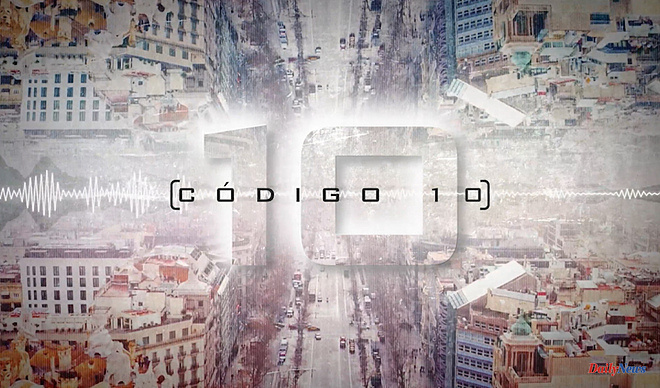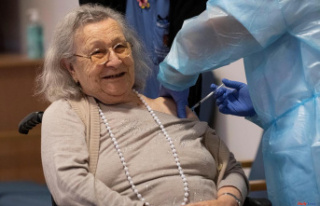In July 2021, at his home in Sabadell, Pedro Fernández was beaten to death while he was sleeping next to Dolores Vázquez, his girlfriend. He tried to run away, but his executioner followed him to the landing of the stairs until he ended his life. Isaac Gil and his girlfriend Pilar, Dolores's twin sister, along with Dolores herself, had planned the crime. Alerted by the neighbors who had seen the scene through their peepholes, the Police came that same night and arrested the three. Two of them are serving time and one of the twins is free with charges.
It is the crime of the Sabadell twins, "and we are going to give an exclusive that all the media will echo on Wednesday." The one speaking is Nacho Abad, the king of crime journalism, the journalist who, thanks to his investigations, has obtained key evidence for forgotten or stagnant cases, such as that of Marta del Castillo, one of those who obsess him the most. It was thanks to the documentary that he produced with Cuarzo, ¿Dónde está Marta?, that Miguel Carcaño's mobile phone information was obtained on the night of Marta's murder. Until then no one had analyzed them. That is to say, if there is someone in this country who knows what true crime is, the fascination it generates and what a good true crime must have, it is him.
We are going to provide a lot of data, new data that can turn the cases around
For this reason and because he is going to present a new tailor-made program with David Aleman, Código 10, Nacho Abad has returned to what he considers his home, Mediaset. He does not want to tell how it has been to return after several in the competition, and he limits himself to an "I am happy". He is actually happy because Código 10, which opens tomorrow in prime time on Cuatro, is the true crime that any payment platform would want in its catalog that any crime journalist would want on their resume.
It is not only the aesthetics that surrounds true crime, it is the format that the production company Producciones Mandarina, in charge of the program, has given to it. As in all true crime there is no voiceover or a narrator, who tells the story are its protagonists. And that is what happens in each of the cases that are going to be dealt with in Código 10. Unpublished images, reconstructions of the events with a cinematographic finish, never-heard testimonies and experts. But not ordinary experts, experts of the category of Carlos Segarra, a member of the National Police Force since 1991, dedicated for 25 years to working, interrogating and arresting "the biggest criminals in this country," says Abad.
"We are not going to solve cases, but we are going to deal with cases whose process is still open. We are going to provide a lot of data, new data that can turn the cases around," says David Aleman.
Cases such as the Macastre crimes, a case that in 1989 did not receive much media attention, but whose parallelism with the murder of the Alcàsser girls is so striking that some experts in both cases consider Macastre's as a test of the latter last.
The typology of the victims, the geographical proximity of both towns and the fact that the foot of Pilar Ruiz, one of the three disappeared and murdered young people, appeared on Alcàsser street in Valencia exactly four years before the bodies of the victims were discovered. Miriam, Toñi and Desirée led the Police to question Miquel Ricart about it. The file remains unresolved 33 years later.
They forcefully assure that there will be no "morbidity", that they only intend to "give time to cases", count them and do it "in the best way", but "we are not going to add anything to try to catch". "Sometimes the cases that we are going to tell are so tremendous and so horrifying that they don't need to add anything else, just tell them," explains Aleman, the Watson of this duo.
In fact, the cases chosen by Código 10, and which they have been preparing for more than two months, "must have a background and a very elaborate investigation," says Abad. "We are not going to tell a case suddenly because at the time it made many headlines, but today it does not have any route," he adds, and insists, "there are known and unknown cases and cases that at the time made a headline in the press, but that you start to investigate it and behind it there is much more than a simple headline because at the time nobody stopped, breathed and analyzed, and that is what we do in Código 10, calmly deal with events that today does not allow you " .
The reality of betting on a live program with cinematographic reconstructions responds to the fact that documentaries and programs about events are experiencing a new golden age. After years in which crime journalism was defenestrated due to the treatment that the press gave to cases such as the Alcàsser girls, the platforms and the capacity that they offer to make more relaxed productions and investigations in which time does not matter, has turned traditional event journalism in an increasingly booming television format. There are documentaries like The Girl in the Photo (Netflix) or the Dahmer series, among others.
But bringing true crime to prime time and live has rarely been done. At least, it has never been done having both the intensity of the live show and the last hour, combined with reports more typical of docuseries linked to blockbusters.
"In Spain, a lot of black novels are consumed and, in the end, the cases are real life stories that often go beyond fiction," explains Abad about why this format is "so in vogue." In the true crime format, "you cannot count cases that are solved in five minutes, you have to count cases that have depth, that have elements, that have different protagonists and that are heavily armed," Abad sentences while his motive does not stop vibrate.
In true crime you have to tell cases that have depth, that have elements and that are heavily armed
Your mobile is your great treasure. When you ask him how many contacts he can have saved on the device, he laughs, because he knows that this analysis, this investigation, this search, this data comes from the device that does not stop vibrating: "My job is to get information and tell it, not just get it, tell it and tell it as best as possible. And I am vicious. Vicious of my work and of events".
August 16, 2017, Salvador Rodrigo stabbed Antonio Navarro to death in a garage. He did it after being deceived and manipulated by Maje, his co-worker and lover, without knowing that the young woman was in a relationship with three men at the same time. Both were arrested. For the first time, in Código 10 the audios of the conversation between Maje and Salvador will be heard... The unpublished audios of Patraix's 'Black Widow'.
According to the criteria of The Trust Project












